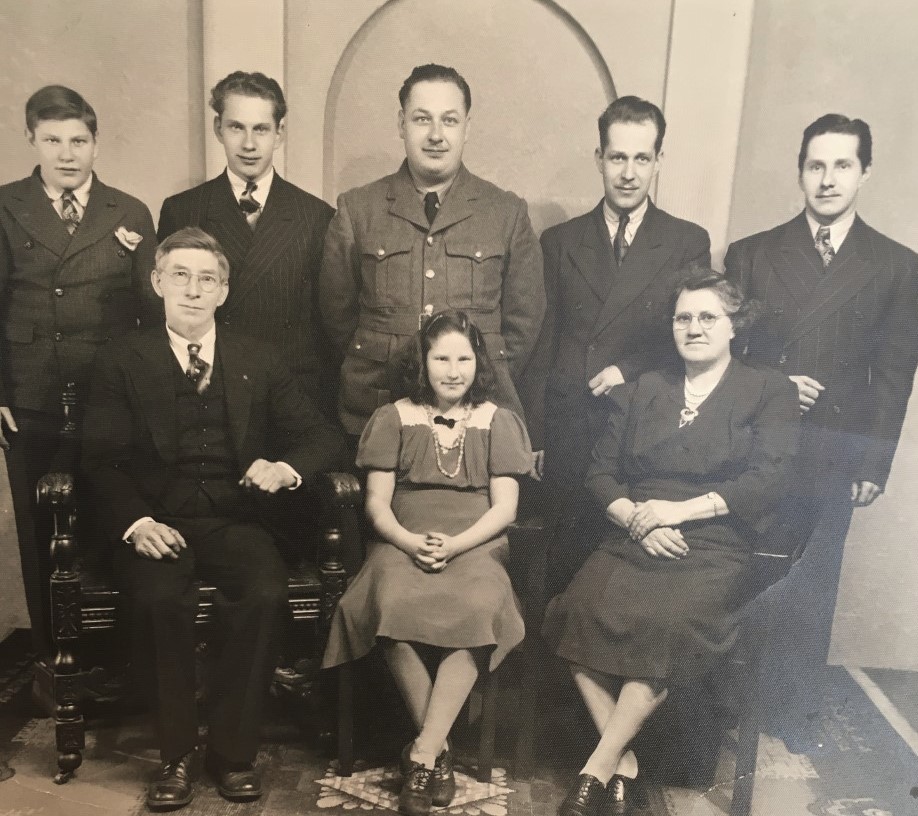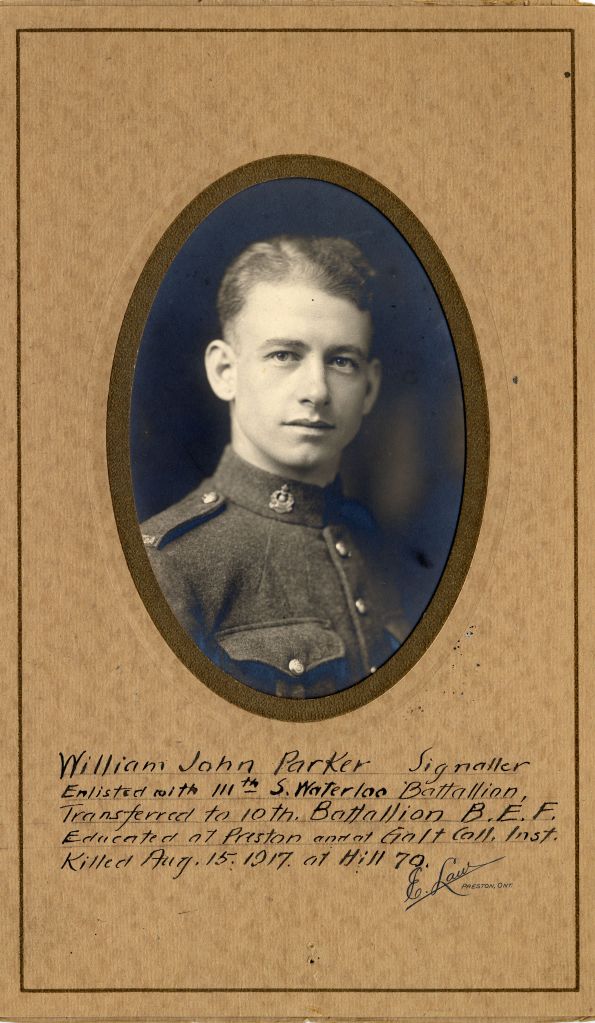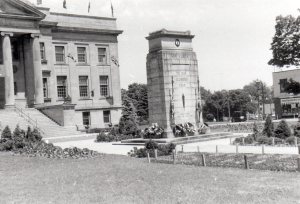
In the halcyon days before COVID-19 pandemic, I received an intriguing request – could I help locate the descendants of a local soldier? There was a special story and connection to share that would link Luciana Trerè of Italy with the family of Private Harold Stevens. Luciana’s friend, Silvana Toscano, was helping her with the Canadian research. How could I resist?
After digging through family trees, obituaries, directories, newspaper clippings, our Soldier Information Card Collection, internet searches and a few calculated hunches, I made contact with Mary Chester, Harold’s niece, and passed on Silvana’s contact information with the details of the story of Luciana’s story. In the intervening months, parties on both sides of the Atlantic have been working to honour Harold and his heroism in Italy.
The story of Private Harold Wellington Stevens and Luciana Trerè has been written by Mirna Milandri in a book called Il soldato canadese e la Bimba di cinque giorni / The Canadian soldier and the five-day-old baby girl It’s an insightful look at hope, loss and gratitude, chronicling the chance meeting of an Italian family fleeing war and a Canadian soldier at a river.
Harold Wellington Stevens was born on 20 October 1922 in Haysville, Ontario, the son of James and Madgalene (nee Lichty) Stevens. He had four brothers – George, Albert, Lorne and Donald, and one sister, Kathleen. After the family moved to Waterloo, Harold attended Alexandra School and played clarinet in the Waterloo Musical Society Band. He worked at Canada Barrels and Kegs Ltd and, at the time of his enlistment in 1943, worked at B.F. Goodrich Rubber Co. He was also a member of Stirling Mennonite Church in Kitchener. He lived with his parents at 29 Rudy Street, Waterloo.

Following his enlistment on 26 March 1943 in London, ON, Harold trained in Canada and England until February 1944, when he was transferred to Italy. Harold served with the “Westies,” Canada’s Westminster Motor Regiment, now known as the Royal Westminster Regiment, which bravely fought its way through several heavily-defended German defensive lines in Italy.
As war raged in Italy, Aurelio and Emma Trerè awaited the birth of their child in the village of Fusignano. On 13 November 1944, Emma gave birth to a beautiful and healthy girl, who was named, Luciana, in the local hospital. Two days later, the couple were told by partisans of an impending conflict and were advised to flee to areas already freed by the Allies, near Piangipane or Camerlona.
A wet, rainy fall has made travel treacherous. On 18 November 1944, after grabbing a few possessions, the family set out as the fighting approached their village. Baby Luciana was placed on a mattress, which was encased in a pillow case, and then wrapped in a wool blanket. Evacuees were handed over to a patrol of Canadian soldiers who were stationed near a river crossing. They were directed to cross the river at a fording place, but struggled with their possessions, fatigue, and the swollen, fast flowing river. As she began the crossing, Grandmother Teresa Ravaglia slipped and fell under water. She accidently let go of the mattress holding baby Luciana. Panicked family members cried out as the mattress quickly sailed down the river. Aurelio struggled to get out of the river and ran along the bank yelling for help as his daughter was carried away by the fast current.
As the mattress rounded a bend in the river, Private Harold Stevens, who was standing on the opposite bank heard the cries of Aurelio and family members and those of baby Luciana. Without regard for his personal safety, he quickly took off his rifle and jacket, descended the embankment and waded into the river. Holding onto the reeds, he was able to grab a hold of the mattress as it passed, rescuing baby Luciana.
Harold returned the baby to Emma and Grandmother Teresa who were distraught believing that Luciana had been lost to the raging river. After an exchange of smiles, nods and well-wishes, Harold returned to his unit and the family set off on their journey. It seemed like tragedy had been averted thanks to a plucky Canadian soldier from Waterloo. As the family walked away, a thunderous explosion made them fall to the ground in a protective huddle. Private Harold Wellington Stevens had stepped on a landmine left by German troops. He died on 19 November 1944 and was buried at the Villanova Canadian War Cemetery in the Commune of Bagnacavallo, Province of Ravenna, Italy.

Source: https://www.findagrave.com/
The impact of Harold’s death was devastating upon his mother, Magdalena. Harold had pleaded with his brother, George, to not to tell their mother that he was being shipped out to Italy so as to not worry her. In a strange premonition of Harold’s death on the day of his death, family tells of the story of Magdalena feeling suddenly ill and hearing Harold’s voice calling to her – a sign to her that something terrible had happened to him. The telegram notifying her of Harold’s death arrived on 27 November 1944, almost 10 days later.
Bob Berg, President of the Royal Canadian Legion – Waterloo Branch is hosting a ceremony to recognize the heroism, service and life of Private Harold Stevens on 16 May 2021 at 1pm.



We are grateful to Luciana Trerè for never forgetting Private Stevens’ sacrifice and her determination to connect with his family to share the gift of his kind spirit.
Lest we forget.
Karen








